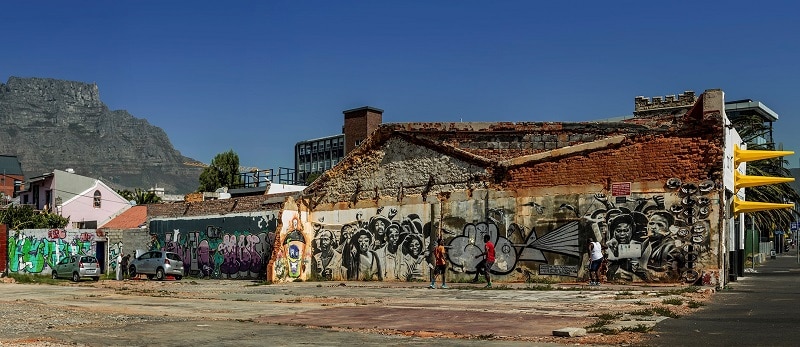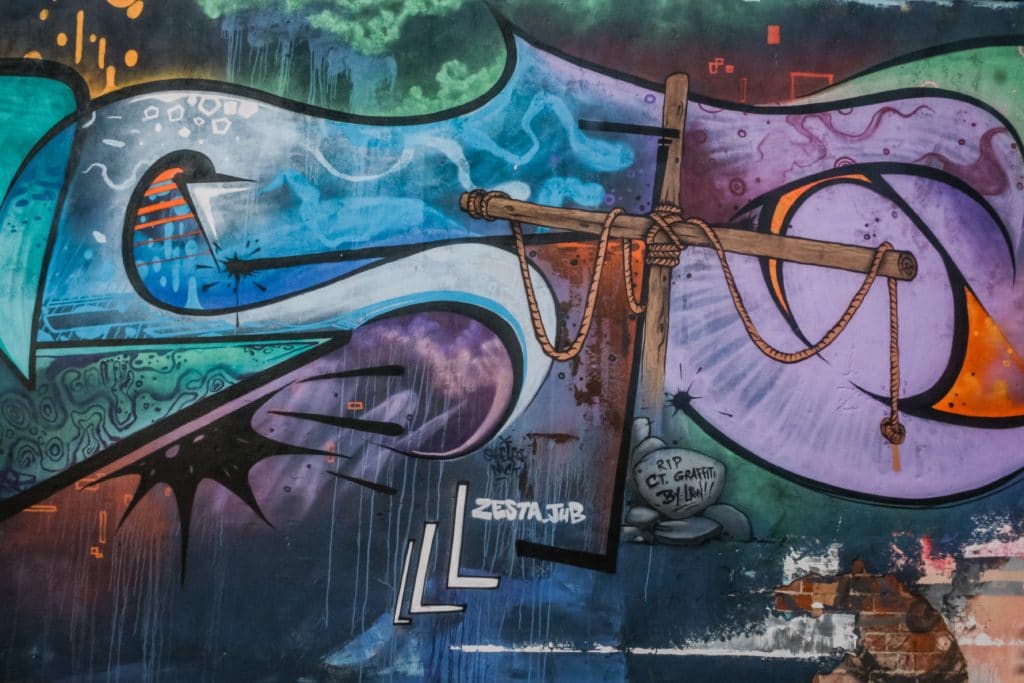Cape Town’s Street Art – History & Culture Soaked into our City Walls
8 February 2021
The city of Cape Town has a lot to show off about. Not only does she boast picturesque scenery and worldly architecture, but the Mother City has a vibrancy that rivals many a city across the globe. Despite the devastating effects of the Covid-19 pandemic, it is clear that what lies within the heart of the city is a diverse and colourful spirit and you can feel our history soaked in her walls, illustrated by the beautiful street art that adorns them.
The Layers of History Run Deep
For many years, Cape Town has been a hub for creativity. During the dark days of Apartheid and prior to the Group Areas Act of 1950, areas like District Six were alive with artistic diversity. Woodstock, a suburb renowned for its street art, was once a multi-cultural seaside destination, but saw its beach stripped during the industrial rise of the 1950’s. It was only later, post-Apartheid, that the area was reborn and became the cultural centre that it is today.
Graffiti culture began to emerge in Cape Town during the rise of Hip Hop in the 1980’s and was often used as a powerful tool to comment on the injustices of Apartheid. The legendary Falko One is known as one of the world’s earliest street artists. According to Inside Hook, he began creating his poignant and beautiful murals in 1988 at his high school in Mitchells Plain, an area that was classified as ‘coloureds only’ during the years of segregation.
Street Art Culture in Cape Town
While the Apartheid regime collapsed in 1994, the devastating effects of oppression can still be seen in Cape Town today. Very little has changed in terms of segregation, and education in poorer, predominately black and coloured areas pales in comparison to the private schooling found in areas where residents are still predominantly white. Cape Town’s street art scene today still functions as a commentary on our economic and social challenges. While graffiti has often been associated with gang culture and ‘tagging’, much of the art in our streets today shows uplifting commentary, the brightening of dull spaces, and a creative way to showcase the struggles and triumphs of Cape Town’s history.
This is evident with the organisation BAZ ART who states on their website that they achieve their objectives through the “creation, education, incorporation and development of art into all areas of South African life.” Their aim is to “harness the power and creativity of art to improve people’s lives in many different ways.” They continue to say that “what distinguishes public art from fine art is the unique association of how it is made, where it is and what it means”.
Which areas in Cape Town are famous for its street art?
The most famous areas to see street art in Cape Town are the CBD, including Bo Kaap, Woodstock and Salt River, as well as Langa, Khayelitsha, Hout Bay, and Mitchells Plain. Locals can feel like tourists in their own city by visiting these vibrant spaces to hunt for beautiful murals or by taking one of the many street art tours arranged by Baz Art.
Diversity and Representation is Overtly Present
The Raptor Room, situated in Roeland Street is a diverse and safe space that offers a home for members of the LGBTQI+ and allows people to celebrate and express themselves without intolerance or prejudice. In 2020, the venue sought permission from the City of Cape Town and, with fundraising and the keen assistance of volunteers, painted the Rainbow Walk, a now-iconic piece of street art where one can strut one’s stuff on a Pride flag while making one’s way through the city. This being a transformative step towards the slow emergence of tolerance and the celebration of diversity in South Africa.
Celebrating our Street Artists
These days, Street Art in Cape Town is a celebrated and well-loved art form. 10 – 14 February marks the 5th International Public Art Festival where 20 local and international street artists will transform walls in Salt River into large-scale canvases. You can find information on this exciting festival at https://ipafest.co.za/.
Whether you are new to the scene or an art fundi, as a local or a tourist, it is easy to enjoy the diverse and poignant art that adorns Cape Town’s architecture. Although the mother city is a long way away from being a truly free and equal space for all, our local street artists are assisting in bringing hope to those who walk her streets.

